The Big Red opens up its schedule with two exhibition games and a scrimmage. The scrimmage is the annual Red/White game which the women and men took part in together last year for the first time, alternating shifts in a slightly shortened 3 period game which went to a shootout. The women's team scored 7 of the 13 goals, with the White team prevailing over the red. Current players who scored last season included sophomore forward Emily Fulton and junior forward Brianne Jenner, while Katelyn Pippy and Lauren Slebodnick backed up their teams.
The exhibition games are both against Canadian Women's Hockey League (CWHL) teams, Brampton and Montreal. Brampton has players formerly from Clarkson, Mercyhurst, Minnesota-Duluth, Niagara University, RPI and Wisconsin as well as players who have served for both the US and Canadian Olympic teams in various levels. Brampton had an overall record of 18-9 on the season, falling in the championship game to the Montreal Stars. Cornell last played the team in an exhibition game at Lynah in the 2011-12 season. The score was 6-0 in favor of the Big Red.
That very same team, Montreal Stars of the CWHL, is the other exhibition game our women play before the season begins. Montreal won back-to-back Clarkson Cups (the CWHL version of the Stanley Cup) in 2011 and 2012, so they are not going to be an easy team to defeat. Former players include Canadian and American Olympic team members as well as former players from Boston University, Clarkson, Harvard, Mercyhurst, Minnesota-Duluth, Princeton, and Saint Lawrence. There are also 3 Patty Kazmaier Award winners on their team (2 from Harvard and 1 from Princeton), an honor that has not been bestowed upon a member of the Big Red yet, since the award's inception in 1998. The Stars had an impressive 20-5 record on the season, going on to win their third Clarkson Cup in the five times the league has given out the award.
Starting off regular season NCAA play, the Lady Rouge plays Boston University away. The two games will be played at BU's Agganis and Walter Brown Arenas. The all-time record against BU is 3-1-1, with the last season having our first wins against the Boston-based team. Cornell has an interesting history against BU. The first game played against the Terriers was in the 1982-3 season, ending in a tie. The remaining four games are likely very sharp in the memory of the Lynah Faithful. In the 2011 Frozen Four, BU beat Cornell in a tough 4-1 game, ending the Big Red's season in Erie, PA. Last season the women met BU in 2 regular season games in Lynah over Thanksgiving, beating the Terriers in decisive 3-1 and 7-1 wins. In what can only be described as an ironic twist of fate, the Big Red met the Terriers a third time that season, in the NCAA Regionals at Lynah Rink. In what was the longest game in Cornell women's hockey history, (3OT), current senior defenseman Lauriane Rougeau scored the game-winning goal to push the Red ahead to an 8-7 victory to complete the year's sweep of the Terriers. Current junior goaltender Lauren Slebodnick played a pivotal role in the game, playing for over 3 full periods and helping solidify our win.
Keeping with the Boston-based theme, the Big Red will play both Northeastern University and Boston College in Boston this January. The Big Red record against Northeastern is 8-28-1 with the first game being played during the 1979-80 season and the most recent game in 2002 with a 2-1 overtime loss. (For those curious about what 2002 looked like for the Big Red women, the record was 6-20-2.) Northeastern had a final record last year of 22-7-4, getting knocked out of the first round of the Hockey East Tournament by Providence, though Northeastern was the first seed in the Hockey East Tournament, narrowly missing a spot in the NCAA. Having only lost three players from last year, Northeastern's team looks to be an interesting match for the Big Red.
When it comes to the Eagles, Cornell has been more dominant in the past. The all-time record against BC is 15-2-1 with the first game being played in the 1974-75 season and the latest meeting being a 4-1 loss in 2002. Boston College last year had an overall record of 24-10-3, they fell to Boston University in the semifinals of the Hockey East Tournament but went on to the NCAA Tournament. In the NCAA last year, BC beat Saint Lawrence 6-3 and went on to lose in the Frozen Four to Wisconsin. Much like the Big Red, the Eagles have a decent turnover in players this year, with six freshmen on the roster. It should be an interesting match and hopefully will challenge the Red to step up their game.
Coming back to New York, the women will play Syracuse at home right after their trip up to Boston. The Big Red record against Syracuse is 3-1-0 all-time with our first game against the Orange in 2010. The first meeting was the only loss against the team, with the remaining three wins coming in the last two seasons including the 9-2 and 6-3 wins last season. Syracuse ended their season 10-22-3, losing in the first round of the CHA Tournament to Mercyhurst.
Speaking of Mercyhurst, our final out of conference opponent is another one to reach the 2012 NCAA Tournament. Cornell's all-time record against the Lakers is 4-13-1. Our games against the Pennsylvania team began in the 2001-02 season with our last meeting being a 5-1 win against the Lakers, though we split the series with Mercyhurst being one of our 3 regular season losses. Mercyhurst finished the season with a 23-8-3 and though they are perennial powerhouses in the CHA conference, the Lakers fell to Robert Morris in the tournament. In what can be considered a cruel twist of fate for the Colonials and a bit of luck for the Lakers, CHA did not have an autobid to the NCAA Tournament. Because of the high turnover in teams, the 19-9-4 team from Robert Morris did not make the NCAA playoffs, and Mercyhurst did. (This author hopes the current six teams from CHA, Mercyhurst, Robert Morris, Syracuse, Lindenwood, RIT, and Penn State, all hang in there for a possible autobid in the 2014-2015 season.) Mercyhurst ended up falling to eventual runner-up Wisconsin in a 3-1 loss in the NCAA Regionals. While Mercyhurst is a perennial force, they have more turnover in their team than the Big Red women do. There are 9 freshmen on the roster for the Mercyhurst team which could mean that it takes them a while to get their legs, or it could mean a surprise from a team who is usually dominant in their conference. This will be an interesting game to watch.
Union College
All-Time Record: 17-1-0
First and last games: 2003-04, 5-1 Win, regular season
Union College's men's team might have shot to the Frozen Four last year in an unlikely run, but their women's team would need more than a miracle for that to happen. With seven incoming freshmen on a team without any history of success, Union will not pose much difficulty for the Red at all. With a record in 2011-12 of 4-26-4, the Dutchwomen are not exactly a team to be feared. Cornell handedly beat Union 9-1 and 5-1 last year and there is no reason to believe that they will not do the same this year. Last year, finishing at 11th in the ECAC, was their best season, never having made the ECAC playoffs. (The women only admit the top 8 teams to the playoffs, thus having one round shorter than the men's playoffs.)
Yale University
All-time record: 48-13-1
First and last games: 1975-76, 6-1 win, regular season
Yale University seems to (at least recently) be in the same stage as the Union team. A men's team with history and a women's team without. Finishing off last season with a 1-27-1 record, the Bulldogs' only win came in overtime against the aforementioned Union team. In previous years, Yale's team has not been good per se, but they have not had one-win seasons, having last made it to the ECAC Tournament in the 2006-07 season. With six incoming freshmen, it is unclear whether Yale will benefit or suffer from losing six players. It was a close call for who should be at the bottom, but I think that Yale will pose no challenge to Cornell in these matches either.
Colgate University
All-Time Record: 27-11-3
First and last games: 1973-74, 3-0 win, regular season
Colgate University can at least claim to have a winning percentage of over 1/4 against Cornell, something neither Union nor Yale can. That said, it is unclear of how big a threat a Colgate team will be. Colgate finished tenth in the ECAC last year, with an overall record of 10-21-2. Colgate has six incoming freshmen, and seems to only recently be out of the playoff-glory. The last year they reached the ECAC Tournament was 2009, with a loss in the quarterfinals. They reached the semifinals in 2007, losing to Dartmouth that year. Hopefully the six incoming freshmen will propel the Raiders to a more competitive season, but that remains to be seen. They will be harder competition than Yale or Union, but still pretty easy for Cornell.
RPI
All-Time Record: 11-4
First and last games: 2006-07, 3-0 win, regular season
RPI is a team that Cornell has handedly beaten in the past, but RPI is a team that is resilient. They have only been in the ECAC since the 2006-07 season, and not long after that, they propelled themselves into the ECAC Championship game, going down to Cornell 5-4. Since the 2010 season, they have not been able to get past the first round of the tournament (losing in 2011 to Cornell in the quarterfinals), but even with 6 freshmen incoming, the RPI team seems like one that can't be kept down for long, in spite of their 9-21-4 record last season. They're someone we'll need to keep an eye on, but I feel confident that the Lady Rouge will be able to handle it.
Brown University
All-Time Record: 40-34-8
First and last games: 1972-73, 6-0 win, ECAC Tournament
Brown, like a lot of teams, has six incoming freshmen this year. For a team which finished 8th, barely sneaking its way into the ECAC Tournament, Brown is something of a wildcard. Finishing 8-16-7 last year, Brown possesses a 46% winning percentage against the Big Red over its 40 years of play, the best thus far. While Brown is not historically a power when it comes to women's hockey, it is a team that could pull an upset win if the Big Red aren't attentive.
Princeton University
All-Time Record: 33-41-4
First and last games: 1974-75, 1-0 win, regular season
Princeton, as a team, is one that could be a surprise. Another team with six incoming freshmen, Princeton comes off a season with a 12-15-4 record. While last season's record alone is not incredibly impressive, they are the first team looked at to have a winning percentage against Cornell greater than fifty percent (55% to be exact). In the last five years, Princeton has made the ECAC playoffs every year, a feat that cannot be claimed by most teams in the league. In fact, as far back as I can check on Princeton's website (the 2000-2001 season), Princeton has made the playoffs every year. Only twice have they gone past the quarterfinals, with losses in the semifinals both times. However, in 2006, Princeton did convert their play into an NCAA appearance. While Princeton hasn't made the NCAA since then, they have also not finished outside the top eight either. As a team with a winning record against us who always makes the playoffs? Princeton is not a team to underestimate.
Quinnipiac University
All-Time Record: 9-3-5
First and last games: 2003-04, 5-1 win, ECAC Tournament
Quinnipiac lost seven seniors last year, which makes the team a little bit more vulnerable but not considerably. However, since Quinnipiac has joined the ECAC in 2005, they've made quite the splash in the league. Finishing 6, 5, and 4 in the regular season last year, the Bobcats got knocked out by the Big Red in the semifinals two years in a row. The year before they made it to the quarterfinals, pushing two games to overtime, eventually losing in a 5OT game to RPI. Quinnpiac in the last three years has proven that they are a force to be reckoned with in the ECAC. Another team not to take lightly, Quinnpiac's 19-16-2 record and their enthusiasm toward winning their first ECAC championship could propel them to win. Definitely another team to keep on the radar.
Clarkson University
All-Time Record: 18-10-2
First and last games: 1974-75, 2-1 OT win, regular season
The Golden Knights lose only 5 seniors between their 2011-12 and 2012-13 teams. Their record in 2012 was 22-10-5, their season ending in an ECAC quarterfinal loss to Quinnipiac. Clarkson is a team that has been toward the top of the ECAC in most of its years. Even with their loss to Cornell in the ECAC Championship Final game in 2010, they made it to the NCAA Tournament (only to lose in overtime in the first round to Minnesota). Still seeking an ECAC Championship, Clarkson has proven to be another team to look out for. Though we still have a winning record against them, it is nowhere near as lopsided as, say, the record against Union. Clarkson will certainly put up a fight this season, but it is a fight that the Big Red will be ready to handle. Especially given that Clarkson was one of the three teams the Big Red lost to in the regular season last year.
The next three teams are hard to order. So for convenience, we're going to approach it in an alphabetical fashion. These three teams will be the Red's biggest in-conference (and potentially biggest overall) competition all year: Dartmouth, Harvard, and Saint Lawrence.
All-Time Record: 26-41-6
First and last games: 1978-79 1-0 OT win, regular season
Dartmouth is a team that has had quite a history of success. There is only one year in the last 7 that they did not make the ECAC Tournament. On top of that, in the last six years, they have made the NCAA Tournament 4 times (losing all four times in the regionals). With two ECAC Championships in that time, Dartmouth is never a team to doubt. They pushed us to overtime in our last game against them. In 2011, they played a close game against the Big Red in the finals only to end up back in Lynah for the regionals where Cornell defeated them once again. The team has no higher turnover than most of the league next year, with 6 freshmen, split between defensemen and forwards. With none of their goalies new to the team, it seems as if Dartmouth could be poised to make another run. This is a team that needs to be taken incredibly seriously, especially given their 61% winning percentage against the Big Red. To top it off, Dartmouth was one of only three teams in the regular season (four overall) to beat the Big Red for the year.
Harvard University
All-Time Record: 23-50-3
First and last games: 1981-82, 2-1 win, regular season
Next comes Harvard. Our perennial rivals, both in men's and women's hockey. The Harvard Crimson are even more fearsome this year if we look at their summer activities. 6 current Harvard players played for the Team USA U22 along with Cornell goalie Lauren Slebodnick for the sweep of Team Canada which had 7 Cornell players. This is big. Harvard is the team in the league with the most wins historically, winning the ECAC four times in a row from 2003-2006. With three of those wins, they were runners up in the national championship game. The year before that, 2001-2002, Harvard women won a national championship before the women's hockey format was in its current iteration. They are the team to look out for every single year, not finishing below third in the regular season in the past five years. While recent Big Red fans might view Cornell as the power of the ECAC (much like we are for the men), Cornell women's success is relatively recent. Last year we broke .500 for program history, and it is only the last three years that we finished atop the ECAC in the regular season, winning two of three ECAC Tournaments and making it to our first (and only) three NCAA and Frozen Fours. Basically: while Harvard sucks, they're not someone to be trifled with in the women's hockey world. One positive of this is that two of seven incoming freshmen are goalies. So we can hope that plays to our advantage with a Junior, Sophomore and Freshman goalies amongst the Big Red.
Saint Lawrence University
All-Time Record: 25-32-4
First and last games: 1976-77, 3-1 loss, ECAC Tournament
Did they need to be last? After stopping Cornell from three-peating in the ECAC Tournament, SLU upset the Big Red punching their ticket to the NCAA Tournament. (Luckily our PWR ranking was good enough to put us there as well.) SLU went on to lose to Boston College in a game which was tighter than the 6-3 score seems. With a final season record of 24-10-4, SLU is a team that downed a Cornell team that looked too big to fail. The loss, while big for SLU, was even bigger for Cornell, propelling them to go on to a triple overtime win against BU before falling to Minnesota in the Frozen Four. SLU graduates five seniors, which is about on par with the league. They're going to be a huge test for the Big Red this season, especially if they play like the SLU of early March. We're playing an unorthodox three games against SLU, opening up our home season with the Saints in an out-of-conference game in addition to the two conference games later in the year. Hopefully this will be a good move for the Red.

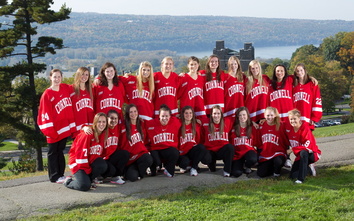
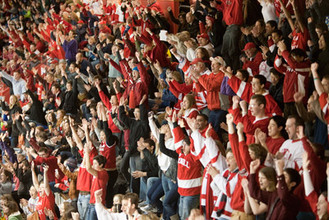
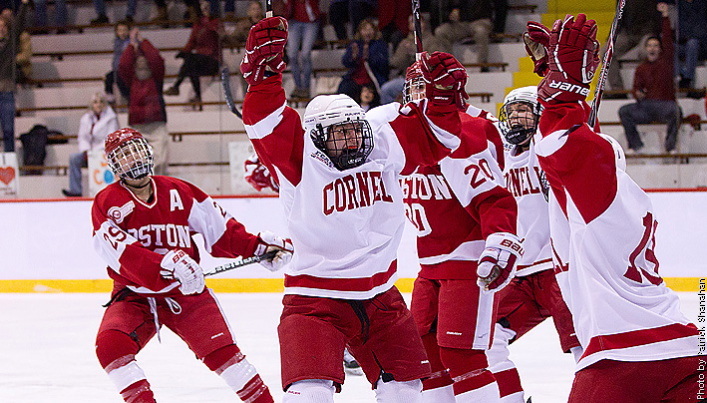

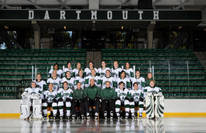
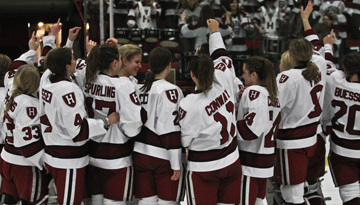
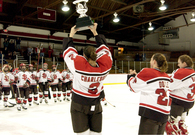
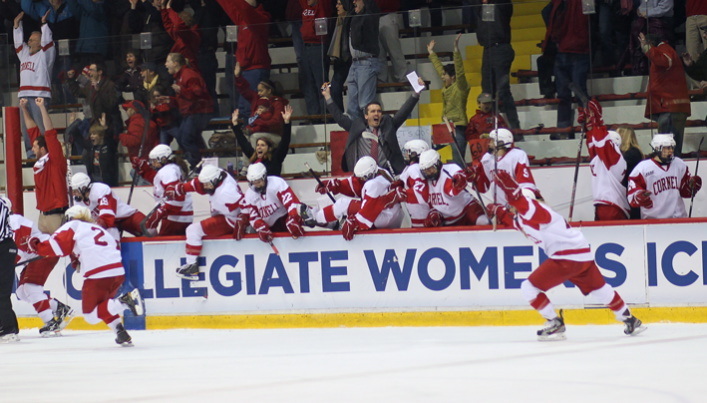
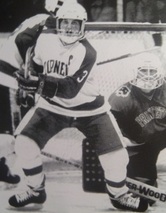

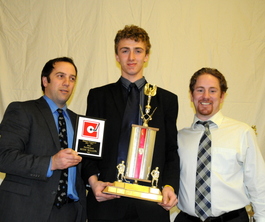


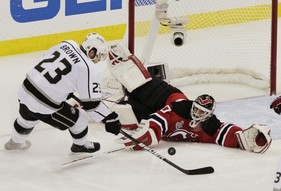
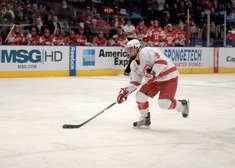
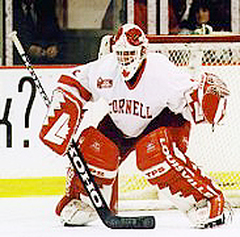
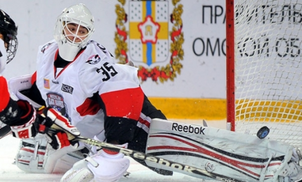

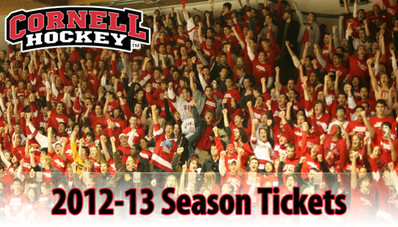
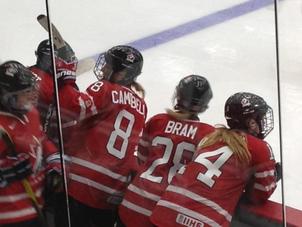





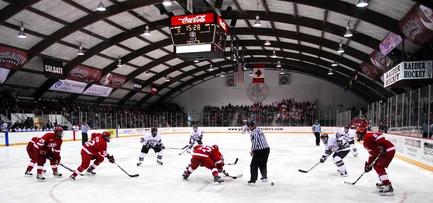


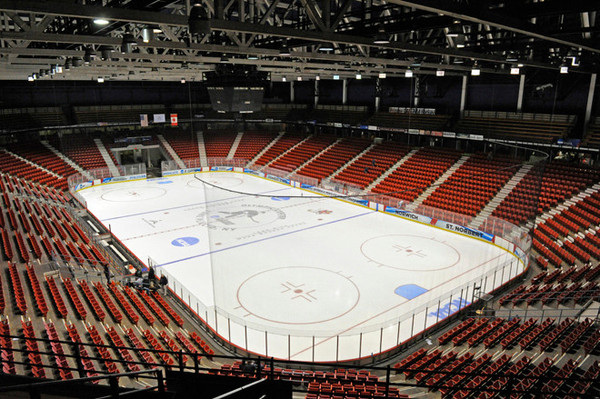

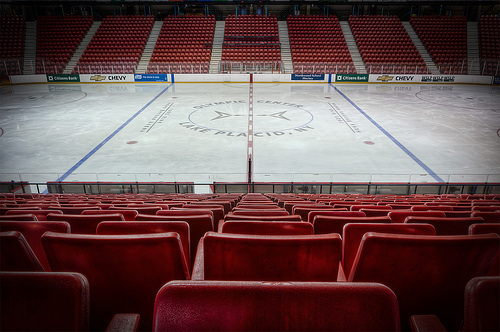
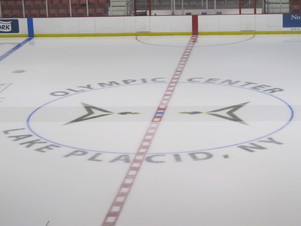
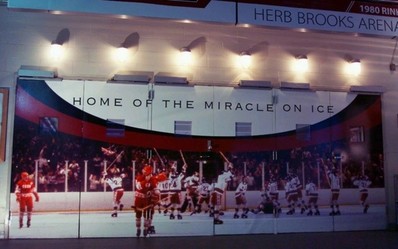
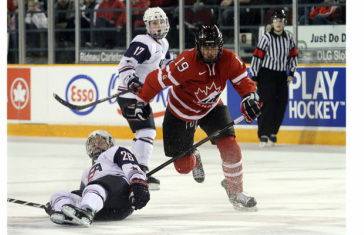
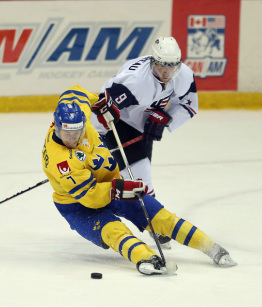
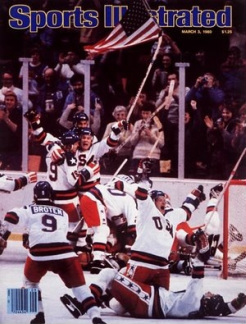
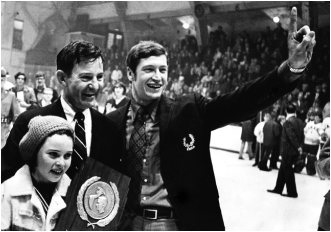
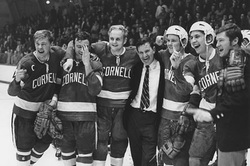
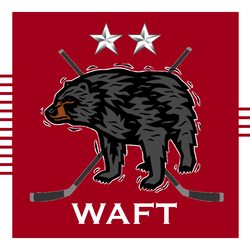

 RSS Feed
RSS Feed
